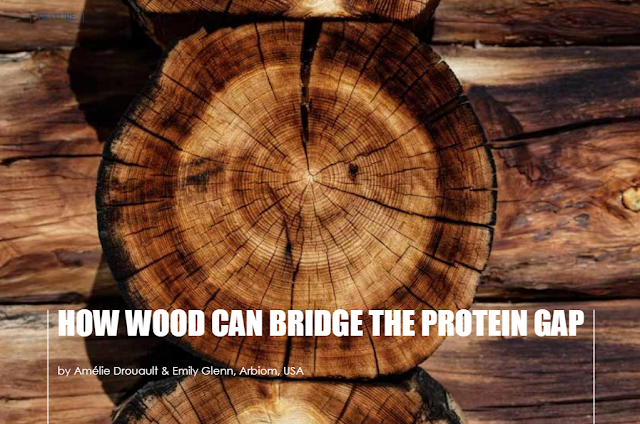by
Amélie Drouault & Emily Glenn, Arbiom, USA
Projections indicate that, by 2050, animal-derived protein is expected to double to more than 465 million tonnes of meat and one billion tons of milk. As demand continues to expand, there are growing concerns about the availability of resources—including fish meal and fish oil—to safely and sustainably feed the world.
Considering fish protein already contributes 17 percent of the global human population’s intake of animal protein, it is safe to say this trend is a major societal concern. Aquaculture, due to its high feed conversion ratio and low land utilisation, must step up to the challenge of feeding our growing global population and increasing appetites for more animal protein. In order to sustainably and economically expand production of farmed fish and shellfish, aquaculture producers are fast searching for new solutions and innovations to improve their operations across the production process.
In particular, feed is one area that offers a host of opportunities to both improve animal and, thereby, human nutrition, as well as reduce agriculture’s impact on the environment. There are several challenges currently facing feed formulators when it comes to sourcing raw materials – including volatile pricing, inconsistent quality, toxicity and rancidity risk, lack of transparency/traceability, biodiversity and environmental concerns. These challenges are encouraging aquafeed producers to find new solutions that deliver improved animal nutrition and cost-performance and have minimal impact on biodiversity and the environment.
As we approach the limits of conventional agricultural production systems, alternative protein sources are emerging and could expand to encompass up to a third of the market by 2054. In this article, we will explore the advancement of alternative protein sources to complement fish meal with a focus on Single Cell Proteins (SCPs) derived from an unlikely source.
Introducing Single Cell Proteins
As aquafeed producers have searched for new resources to meet protein demand, much of the focus has centered around a two-fold question: How can we produce more food using less resource inputs while also reducing agriculture’s impact on the environment and biodiversity?
Single Cell Proteins (SCPs) include microbes such as yeast, fungi, bacteria and microalgae, which can be produced via fermentation, requiring less land, water and fertilizer than traditional plant or animal sources. Several strains of SCP’s can serve as high-quality protein sources for aquafeed, with high protein content and essential amino acids, along with micronutrients.
Wood as a solution
Until recently, SCP’s potential was limited due to production challenges. Producing a high-protein SCP product in commercially-relevant volumes for animal feed in a way that is both economical at a commercial scale and safe in terms of feedstock and production inputs simply has not been achieved.
Read more HERE.
Visit the Arbiom website, HERE.
Projections indicate that, by 2050, animal-derived protein is expected to double to more than 465 million tonnes of meat and one billion tons of milk. As demand continues to expand, there are growing concerns about the availability of resources—including fish meal and fish oil—to safely and sustainably feed the world.
Considering fish protein already contributes 17 percent of the global human population’s intake of animal protein, it is safe to say this trend is a major societal concern. Aquaculture, due to its high feed conversion ratio and low land utilisation, must step up to the challenge of feeding our growing global population and increasing appetites for more animal protein. In order to sustainably and economically expand production of farmed fish and shellfish, aquaculture producers are fast searching for new solutions and innovations to improve their operations across the production process.
In particular, feed is one area that offers a host of opportunities to both improve animal and, thereby, human nutrition, as well as reduce agriculture’s impact on the environment. There are several challenges currently facing feed formulators when it comes to sourcing raw materials – including volatile pricing, inconsistent quality, toxicity and rancidity risk, lack of transparency/traceability, biodiversity and environmental concerns. These challenges are encouraging aquafeed producers to find new solutions that deliver improved animal nutrition and cost-performance and have minimal impact on biodiversity and the environment.
As we approach the limits of conventional agricultural production systems, alternative protein sources are emerging and could expand to encompass up to a third of the market by 2054. In this article, we will explore the advancement of alternative protein sources to complement fish meal with a focus on Single Cell Proteins (SCPs) derived from an unlikely source.
Introducing Single Cell Proteins
As aquafeed producers have searched for new resources to meet protein demand, much of the focus has centered around a two-fold question: How can we produce more food using less resource inputs while also reducing agriculture’s impact on the environment and biodiversity?
Single Cell Proteins (SCPs) include microbes such as yeast, fungi, bacteria and microalgae, which can be produced via fermentation, requiring less land, water and fertilizer than traditional plant or animal sources. Several strains of SCP’s can serve as high-quality protein sources for aquafeed, with high protein content and essential amino acids, along with micronutrients.
Wood as a solution
Until recently, SCP’s potential was limited due to production challenges. Producing a high-protein SCP product in commercially-relevant volumes for animal feed in a way that is both economical at a commercial scale and safe in terms of feedstock and production inputs simply has not been achieved.
Read more HERE.
Visit the Arbiom website, HERE.
This blog is maintained by The Aquaculturists staff and is supported by the
magazine International Aquafeed which is published by Perendale Publishers Ltd
For additional daily news from aquaculture around the world: aquaculture-news


No comments:
Post a Comment